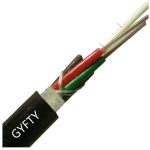The pace of 5G commercialization is getting closer and closer, and the terminal that first presents its power is a smart phone. However, for ordinary users, 5G and 4G are only faster network speeds. Mobile phone manufacturers directly sell 5G mobile phones, and users can purchase new mobile phone tariff packages from operators. But the specific application of this is only the last step. Now Intel, Qualcomm, Huawei and other vendors are competing for the camp in the industrial chain.
Since the end of 2017, chip manufacturers have rushed to run 5G chips. Qualcomm, Intel, Huawei, and MediaTek have released 3GPP baseband chips for 3GPP standards. It is expected that terminals equipped with these chips will be available in 2019. Among them, the terminal includes 5G mobile phones of brands such as Huawei, OPPO, vivo, and Xiaomi, as well as PCs and commercial devices.
The chips in the mobile phone mainly include a radio frequency chip, a baseband modem, and a core application processor. The main manufacturers of RF chips are Skyworks, Qorvo, TriQuint, etc.; core application processors are the most common CPUs and GPUs, such as Qualcomm’s Opteron series. There are still no vendors in this field that can shake Qualcomm. Status; and baseband modems, the most critical vendors include Qualcomm, MediaTek, Samsung, HiSilicon and Spreadtrum.
However, the gradual release of the modem does not mean that the 5G picture has been fully realized. Wu Geng, Intel academician and chief technical expert of Intel wireless technology and standards, told reporters: “In fact, 5G is now a starting point for the overall level of new generation technology. Not an end.”




